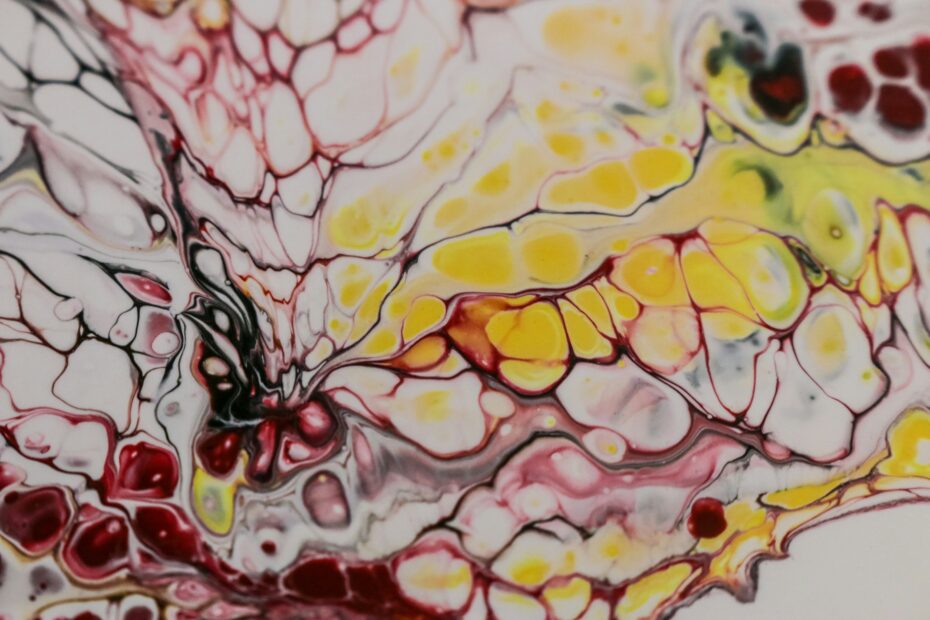Arco, J. E., Ramírez, J., Górriz, J. M., Ruz, M., & Alzheimer’s Disease Neuroimaging Initiative. (2021). Data fusion based on Searchlight analysis for the prediction of Alzheimer’s disease. Expert Systems with Applications, 185, 115549. — PDF
Spears, D., Okan, Y., Hinojosa-Aguayo, I., Perales, JC., Ruz, M. & González, F. (In press) Can induced reflection affect moral decision-making? Phiilosophical Psychology. — PDF
Díaz-Gutiérrez, P., Arco, J.E., Alguacil, S., González-García, C., Ruz, M. (2020). Neural representations of social valence bias economic interpersonal choices. Neuropsychologia, 147, 107584. — PDF
Lopez-Garcia, D., Sobrado, A., Peñalver, JMG., Gorriz, JM., Ruz, M. (2020) Multivariate pattern analysis techniques for electroencephalography data to study Flanker interference effects, International Journal of Neural Systems. https://doi.org/10.1142/S0129065720500240. — PDF
González-García, C., García-Carrión, B., López-Benítez, R., Sobrado, A., Acosta, A., & Ruz, M. (2020) Induced affective states do not modulate effort avoidance. Psychological Research, 1-13. — PDF
Correa, Á., Alguacil, S., Ciria, L.F., Jiménez, A. & Ruz, M. (2020). Circadian rhythms and decision-making: a review and new evidence from electroencephalography. Chronobiology International, doi: 10.1080/07420528.2020.1715421. — PDF
Díaz-Gutiérrez, P., Gilbert, S. J., Arco, J. E., Sobrado, A., & Ruz, M. (2020). Neural representation of current and intended task sets during sequential judgements on human faces. NeuroImage, 204, 116219. — PDF
Arco, J. E.; Díaz-Gutiérrez, P., Ramírez, J., & Ruz, M. (2020). Atlas-based classification algorithms for identification of informative brain regions in fMRI data. Neuroinformatics, 1-18. — PDF
Juechems, K., Balaguer, J., Castañón, S. H., Ruz, M., O’Reilly, J. X., & Summerfield, C. (2019). A network for computing value equilibrium in the human medial prefrontal cortex. Neuron, 101(5), 977-987. — PDF
Palenciano, A. F., González-García, C., Arco, J. E., Pessoa, L. & Ruz, M. (2019) Representational organization of novel task sets during proactive encoding. Journal of Neuroscience, 719–725. — PDF
Palenciano, A. F., González-García, C., Arco, J. E., & Ruz, M. (2018). Transient and sustained control mechanisms supporting novel instructed behavior. Cerebral Cortex, 1-13. — PDF
Arco, J.E., González-García, C., Díaz-Gutiérrez, P., Ramírez, J., & Ruz, M. (2018). Influence of activation pattern estimates and statistical significance tests in fMRI decoding analysis. Journal of Neuroscience Methods, 308, 248–260. — PDF
Díaz-Gutiérrez, P.; Alguacil, S. & Ruz, M. (2017). Bias and control in social decision-making. In A. Ibáñez, L. Sedeño & A. García (eds), Neuroscience and Social Science: The missing link (pp 47- 68). Cham: Springer.
Juechems K, Balaguer J, Ruz M, Summerfield C. (2017) Ventromedial prefrontal cortex encodes a latent estimate of cumulative reward. Neuron 93(3):705-714.e4. doi: 10.1016/j.neuron.2016.12.038.
Palenciano, AF, Díaz-Gutiérrez, P, González-Garcia, C, Ruz, M (2017) Neural mechanisms of cognitive control/Mecanismos neurales de control cognitive. Estudios de Psicología 38 (2), 311-337. — PDF
González-García C, Arco JE, Palenciano AF, Ramírez J, Ruz M. (2017) Encoding, preparation and implementation of novel complex verbal instructions. Neuroimage 1;148:264-273. doi: 10.1016/j.neuroimage.2017.01.037 — PDF
Alguacil S, Madrid E, Espín AM, Ruz M. (2017) Facial identity and emotional expression as predictors during economic decisions. Cognitive, Affective & Behavioral Neuroscience 17(2):315-329. doi: 10.3758/s13415-016-0481-9
Correa A, Ruiz-Herrera N, Ruz M, Tonetti L, Martoni M, Fabbri M, Natale V. (2017) Economic decision-making in morning/evening-type people as a function of time of day. Chronobiology International 34(2):139-147. doi: 10.1080/07420528.2016.1246455. — PDF
Lapotka M, Ruz M, Salamanca Ballesteros A, Ocón Hernández O. (2016) Cold pressor gel test: A safe alternative to the cold pressor test in fMRI. Magnetic Resonance Medicine doi: 10.1002/mrm.26529
González-García C, Mas-Herrero E, de Diego-Balaguer R, Ruz M. (2016) Task-specific preparatory neural activations in low-interference contexts. Brain Structure & Function (8):3997-4006. — PDF
González-García C, Tudela P, Ruz M. (2015) Unconscious biases in task choices depend on conscious expectations. Consciousness & Cognition 37:44-56. doi: 10.1016/j.concog.2015.08.001. — PDF
Alguacil, S., Tudela, P., & Ruz, M. (2015). Ignoring facial emotion expressions does not eliminate their influence on cooperation decisions. Psicológica, 36(2). — PDF
Wei Z, Ruz M, Zhao Z, Zheng Y. (2015) Epistemic motivation affects the processing of negative emotional stimuli in interpersonal decisions. Frontiers in Psychology 23;6:1057. doi: 10.3389/fpsyg.2015.01057. — PDF
Sanabria D, Madrid E, Aranda C, Ruz M. (2015) Attentional orienting to own and others’ hands. Experimental Brain Research 233(8):2347-55. doi: 10.1007/s00221-015-4303-z.
Ruz M, Aranda C, Sarmiento BR, Sanabria D. (2015) Attention to individual identities modulates face processing. Experimental Brain Research 2015 May;233(5):1491-502. doi: 10.1007/s00221-015-4223-y. — PDF
Ibanez A, Kotz SA, Barrett L, Moll J, Ruz M. (2014) Situated effective and social neuroscience. Frontiers in Human Neuroscience 28;8:547. doi: 10.3389/fnhum.2014.00547. — PDF
Moser, A., Gaertig, C. & Ruz, M. (2014) Social information and personal interests modulate neural activity during economic decision-making. Frontiers in Human Neuroscience 8:31. doi: 10.3389/fnhum.2014.00031. — PDF
González-García, C., Tudela, P., & Ruz, M. (2014). Functional magnetic resonance imaging: a critical analysis of its technical, statistical and theoretical implications in human neuroscience. Revista de neurologia, 58(7), 318-325. — PDF
Alguacil, S., Tudela, P. & Ruz, M. (2013) Cognitive and affective control in a flanker word task: common and dissociable brain mechanisms. Neuropsychologia, 51, 1663-1672. — PDF
Tortosa, M.I., Lupiáñez, J. & Ruz, M. (2013) Race, emotion, and trust: An ERP study. Brain Research, 1494, 44-55. — PDF
Tortosa, M.I., Strizhko, Capizzi, M. & Ruz, M. (2013) Interpersonal effects of emotion in a multi-round Trust Game. Psicologica, 34, 179-198. — PDF
Ruz, M., Madrid, E., Tudela, P. (2013) Interactions between perceived emotions and executive attention in an interpersonal game. Social, Cognitive & Affective Neuroscience, 8, 838-44. — PDF
Gärtig, C., Moser, A.R., Alguacil, S. & Ruz, M. (2012) Social information and economic decision-making in the ultimatum game. Frontiers in Decision Neuroscience, 6:103. — PDF
Baines, S., Ruz, M., Rao, A., Denison, R. & Nobre AC. (2011) Modulation of neural activity by motivational and spatial biases. Neuropsychologia, 49, 2489-97. — PDF
Ruz, M. & Moser, A. & Webster, K. (2011) Social expectations bias decision-making in uncertain interpersonal situations. PLoS ONE 6(2): e15762. doi:10.1371/journal.pone.0015762. — PDF
Ruz, M. & Tudela, P. (2011) Emotional conflict in interpersonal interactions. NeuroImage, 54, 1685-91. — PDF
Aranda C, Ruz M, Tudela P, Sanabria D. (2010) Focusing on the bodily self: The influence of endogenous attention on visual body processing. Attention, Perception & Psychophysics, 72, 1756-64. — PDF
Aranda C, Madrid E, Tudela P, Ruz M. (2010) Category expectations: A differential modulation of the N170 potential for faces and words. Neuropsychologia, 48, 4038-45. — PDF
Ruz, M. & Fuentes, L. (2009) Beyond perception: Testing for implicit conceptual traces in high-load tasks. Consciousness & Cognition, 18, 820-2. — PDF
Ruz, M. & Nobre, A.C. (2008) Attention modulates initial stages of visual word processing. Journal of Cognitive Neuroscience, 20, 1727-36. — PDF
Ruz, M. & Nobre, A.C. (2008) Dissociable top-down anticipatory neural states for different linguistic dimensions. Neuropsychologia, 46, 1151-60. — PDF
Periáñez, J.A., Ríos, M., Barceló, F., Madrid, E. & Ruz, M. (2008) Atención y neuroimagen. En Maestú, Ríos y Cabestrero (Eds.) Neuroimagen: Técnicas y Procesos Cognitivos (pp. 281-309). Madrid: Elsevier Masson.
Ruz, M., Madrid, E., Lupiáñez, J. & Tudela, P. (2007) Unconscious perception: Illusion or reality? Estudios de Psicología, 28, 167-176.
Lupiañez, J., Ruz, M., Funes, M.J. & Milliken, B. (2007) The manifestation of attentional capture: Facilitation or IOR depending on task demands. Psychological Research, 71, 77-91. — PDF
Ruz, M., Acero, J.J.,Tudela, P. (2006) What does the brain tell us about the mind? Psicologica, 29, 149-157. — PDF
Ruz, M. (2006) Let the brain explain the mind: The case of Attention. Philosophical Psychology, 19, 495-505. — PDF
Ruz, M., Wolmetz, M., Tudela, P. & McCandliss, B. (2005) Two brain pathways for attended and ignored words. NeuroImage, 27, 852-61. — PDF
Ruz, M., Worden, M., Tudela, P. & McCandliss, B. (2005) Inattentional amnesia to words in a high attentional load task. Journal of Cognitive Neuroscience, 17, 768-76. — PDF
Ruz, M., Madrid, E., Lupiáñez, J. & Tudela, P. (2003) High density ERP indices of conscious and unconscious semantic processing. Cognitive Brain Research,17, 719-31. — PDF
Ruz, M., Tudela, P. & Madrid, E. (2003) Neurociencia Cognitiva de la consciencia: Una revisión sobre los mecanismos cerebrales de la actividad consciente. Estudios de Psicología, 24,147-162.
Ruz, M., & Lupiáñez, J. (2002) A review of attentional capture: On its automaticity and sensitivity to endogenous control. Psicologica, 23, 283-309. — PDF
Lupiáñez, J., Rueda, R., Ruz, M., & Tudela, P. (2000) Processing of attended and ignored words in the parafovea: Inhibitory aspects in semantic processing. Psicologica, 21, 233-256.

















